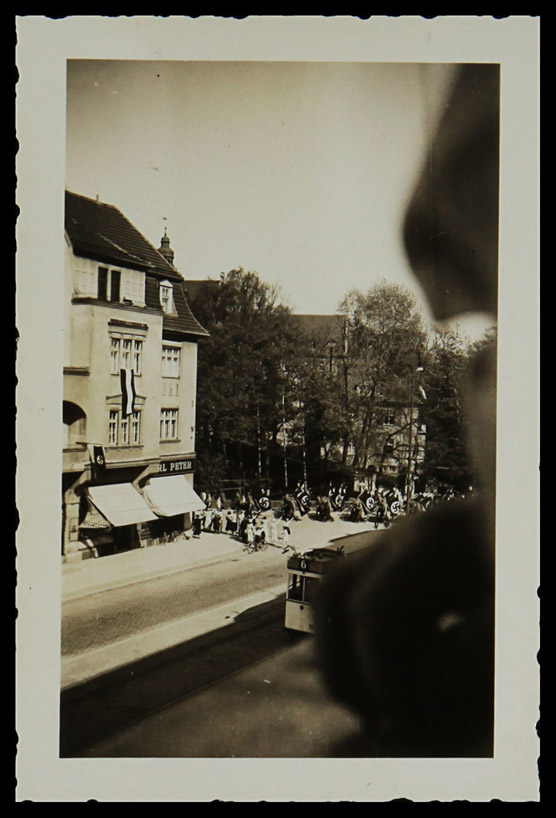The first racial dictatorship
Adolf Hitler’s rise to power as German Chancellor in January 1933 had dramatic consequences. The National Socialist Party rapidly established a brutal dictatorship; the first to be founded on racial ideology. The Weimar Republic, the most liberal democracy of its time, was destroyed.
The National Socialist German Worker’s Party (NSDAP)

This is a NSDAP party badge worn by members of the National Socialist German Worker’s Party. The golden wreath around the edge identifies this particular one as a special reward given to Party members who had joined before 1933. The NSDAP was a radical right-wing group based on an antisemitic ideology. It considered itself an elite providing leadership to the nation.
© National Holocaust Centre and Museum
The Reichstag Fire Decree February 1933
After the Reichstag fire in February, the party created Emergency Decrees that cut people’s civil rights. Nazis were now legally able to imprison opponents without trial, which led to mass arrests. They managed to abolish all opposing parties within six months.
Ruth David recounts how she remembers her parents before Hitler came into power. She recollects how she saw the changes in her family through the eyes of a 4 year old girl.
© National Holocaust Centre and Museum
The Enabling Act March 1933
This gave Hitler the power to make laws outside the parliamentary framework. The ‘One Party State’ used this power to align social institutions, like the trade unions or youth organisations, with Nazi ideas.

A Jewish family took this snapshot of a Nazi parade through Königsberg. How does the Nazi rally marching through the street compare to the official propaganda photography you know? How confident do you think the Nazis could be of public support?
© National Holocaust Centre and Museum
Nationwide boycott of Jewish shops April 1933
The boycott foreshadowed the shift of Nazi violence against Communists and Social Democrats towards Jewish people. Jewish civil servants were removed from the Civil Service. Nazi racist ideology saw this as “cleansing” the service.
Hitler made himself President following the death of Hindenburg in 1934. He also declared himself Chancellor and Head of the Army.
Bernard Grunberg reflects on how his life at school gradually deteriorated after 1933. Interestingly it is not so much the behaviour of the teachers but the behaviour of his classmates that changed. Initially many teachers adhered to an ethos of political neutrality as civil servants.
© National Holocaust Centre and Museum